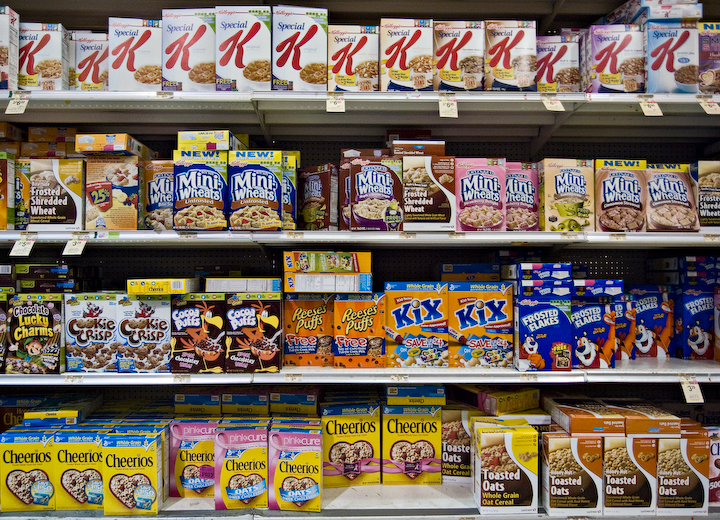Where did the hammers go?
Chris, I like your remaining picture of the cereals, because it has interior structure that the two examples by another commenter lack. The flow of the script K's across the top row, and the beginning of a sense of how many ways a manufacturer can work small variations on an established product. Another theme that might emerge is the signs of the battle for shelf space between different manufacturers. Not sure how to make that visual, unless the script G's, and the "Post" signs are big enough. I thought I saw a hammer shelf, and hammers have a lovely shape, that varies with size, weight, and the type of nail that is the life aim of each hammer. That should give rise to a nice textural variation across the frame. The Bechers' series and conjunctions succeed (with me, at least) because they study their material deeply and extract this kind of internal connection and small continuous changes that can be seen in your cereals, and to a lesser extent in the shapes of the meat in blisterpacks in the other presentation.
Anyway, if you were shamed into removing the hammers by Stuart Rae's gibe, please post them again.
The pocket small sensor cameras are perfect for this sort of stealth Gursky shooting, because they are pocketable and have great depth of field. Mitch Alland has found that if you accept grainy texture as part of the vocabulary you can do very large prints from a GR-D2. If you want stealth and near MF quality, get an M8 with a CV15 or Zeiss 21/2.8. I would think that by bracing the camera against the side of the cart on top of a cereal box, or box of canned goods you would get sharp 1/4 sec exposures so that you wouldn't have to push the sensor speed much. (So it's not level? Shoot RAW and rotate the horizon afterwards.) I carry a GR-D2 with me much of the time, and I have used it in the local supermarket when I saw something sufficiently absurd (I'll post an all-chocolate Passover platter in a PS if I can locate it). It would never occur to me to say "but I'm an artist" if apprehended. I'd just say "this is funny."
scott




